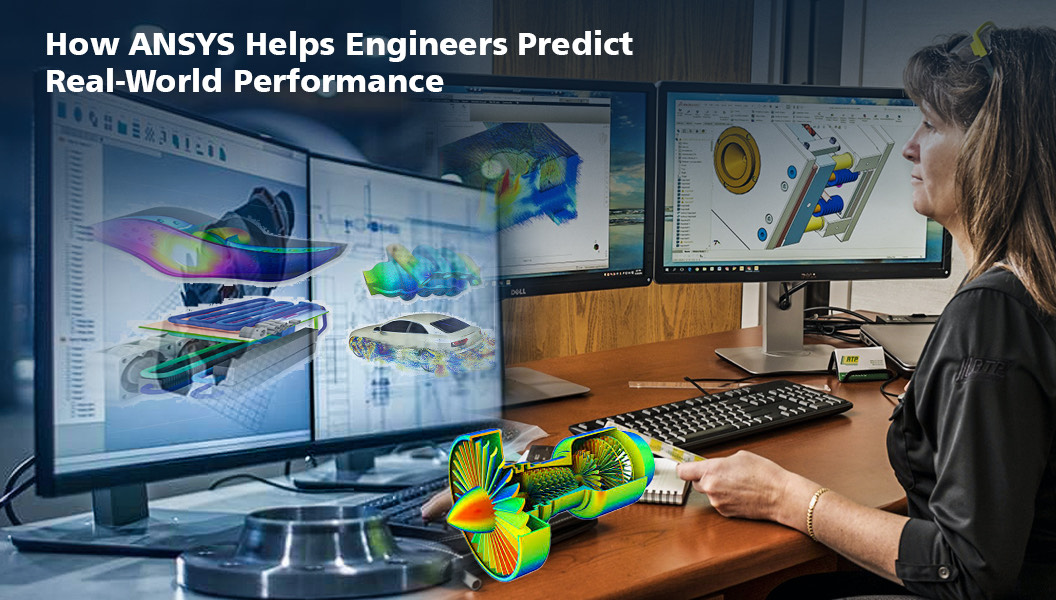- Home
- About Us
-
Training
▼
- Graphics Design
- 3D Animation & VFX
- UI & UX Design
- Interior Design | Architecture
- Civil Engineering
- Mechanical Engineering
- CNC & CAM Engineering
- Mould Design Engineering
- Art CAM Design Engineering
- Electrical Engineering
- Automobile Electric Automation Engineering
- Computer Aided Design Course Content
- Computer Aided Engineering
- Aeronautical Engineering
- Advance Program In MEP
- Advance Program In Composition and Editing
- 3D Scan Reverse Engineering In Product Design
- Gallary ▼
- Blog
- Inquiry

How ANSYS Helps Engineers Predict Real-World Performance
Introduction
Engineers today can’t rely on intuition alone — products must be proven virtually before anything goes to the workshop or construction site. ANSYS simulation software gives design teams the ability to predict how a part, assembly, or system will behave under real-world conditions — often before a single prototype is built. In this article we explain what makes ANSYS engineering simulation so powerful, and why students at the best design institute in Ahmedabad or those enrolled in an engineering design course in Ahmedabad benefit from learning it.
Digital twins, multiphysics and fewer physical tests
At its core, ANSYS enables engineers to create high-fidelity virtual models (digital twins) that couple multiple physics — structural, thermal, fluid, electromagnetic and more — so interactions between forces are captured accurately. That multiphysics capability helps predict failures, optimize performance and reduce costly physical testing.
Faster design iterations with automated workflows and AI
Recent ANSYS releases have added AI-assisted tools and streamlined workflows that speed up model creation, validation and optimization. These features let engineers explore many design alternatives quickly and find solutions that meet performance, weight and cost targets — all inside the simulation environment. The 2025 releases emphasize productivity gains through AI and cloud-ready tools.
Real industry examples — from electronics to aerospace
ANSYS is used across industries where safety, reliability and efficiency matter: electronics thermal management, aerospace structures and turbine design, automotive crashworthiness, and even biomedical device simulation. By simulating thermal hotspots, vibration modes, or electromagnetic interference, teams can fix issues early — lowering rework and time-to-market. ANSYS documents many cross-industry applications showing how simulation reduces testing costs and improves product reliability.
Validate designs with physics-based accuracy
High-quality meshing, validated solver technology and extensive material models mean ANSYS results are trusted by engineering teams and certification bodies. Engineers can run sensitivity studies, factor in manufacturing tolerances, and predict lifetime performance under variable operating conditions — all essential for certified designs in aerospace, energy and medical fields.
From classroom learning to industry readiness
For students and early professionals, practical experience with ANSYS simulation software is a major differentiator on a resume. The best design institute in Ahmedabad and practical engineering design course in Ahmedabad often incorporate ANSYS modules so learners can practice real-world scenarios — from structural analysis to CFD and electromagnetic design. Combining classroom theory with hands-on ANSYS projects makes graduates job-ready for local industries and global employers.
How ANSYS skills multiply your career options
- Design optimization: Reduce weight while keeping strength — valuable in automotive and aerospace.
- CFD & thermal: Predict cooling performance for electronics and power systems.
- Multiphysics: Solve coupled problems for renewables, oil & gas and heavy engineering.
- Electromagnetics: Ensure signal integrity and EMI compliance in electronics.
Learning ANSYS also pairs well with visual skills — students of a 3D animation course in Ahmedabad or CAD classes can better visualize simulation results, turning technical data into compelling reports and presentations for clients and stakeholders.
Why institutes include ANSYS in their curriculum
Top institutes teach ANSYS because it mirrors industry workflows: setting up CAD imports, defining boundary conditions, running parametric studies and interpreting results. Institutes that combine engineering design courses with practical simulation labs help students build portfolios of simulation projects — a solid advantage when employers search for candidates who can “hit the ground running.”
The bigger picture: simulation is now core to innovation
The simulation landscape is evolving — ANSYS itself is expanding capabilities (and recently became part of a larger EDA/simulation ecosystem), enabling tighter integration from chip design through full-system simulation. This trend makes mastering ANSYS even more valuable for engineers solving complex, interdisciplinary problems.
Conclusion
ANSYS engineering simulation is more than software: it’s a method that helps engineers predict real-world performance, reduce risk, and accelerate innovation. Whether you’re choosing the best design institute in Ahmedabad, signing up for an engineering design course in Ahmedabad, or complementing your skills with a 3D animation course in Ahmedabad, building ANSYS expertise will make you a more effective, future-ready engineer.

OUR TRAINING
© 2024 All Rights Reserved. | web desing by uvdigitalsolution
